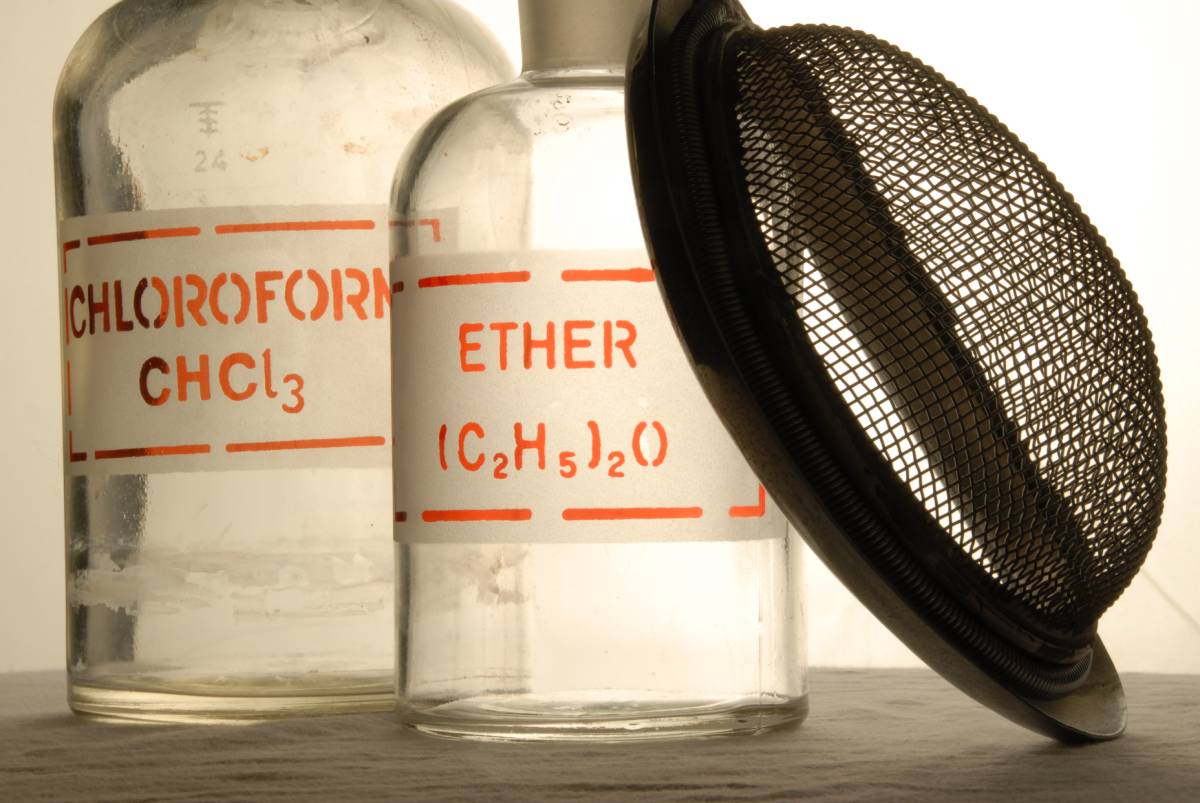The Evolution of Anesthesia Devices

The history of anesthesia equipment is as old as the discipline itself. During the 1840s, dentists experimented with ether and chloroform as sedatives during procedures. In 1846, ether was first used in a surgical procedure by a doctor in Boston [1]. The ether was administered using an ether inhaler. This piece of equipment, which is considered the first of the anesthesia devices, consisted of a glass holder with two openings. Air was pulled in through one opening, passing over a sponge soaked in ether, and out through a tube to the patient’s mouth.
While this early ether inhaler was safer than chloroform, it had two major flaws: it was nearly impossible to regulate the flow of the ether, and some ether flowed out the other opening into the operating room. These problems were solved in progressive iterations of the inhaler. Shortly after the invention of the ether inhaler, Dr. Joseph Clover invented an inhaler that mixed nitrous oxide with the ether and dispersed it via a face mask in 1877. This device featured a regulator that controlled the amount of ether dispersed to the patient, while the nitrous oxide aided in patient comfort [2].
Around the same time as the invention of inhaled anesthetics in the 1840s, the hollow needle was being perfected. This allowed for easier injection of opium as a means of pain management. However, it wasn’t until World War I that intravenous anesthetics became popular. Inhaled anesthetics simply weren’t stable enough for battlefields, which led many wartime doctors to use hedonal and intravenous ether instead. After the war, barbiturates became increasingly popular—hexobarbital was invented in 1932 in Germany and quickly became the most popular intravenous anesthetic worldwide [3].
Modern anesthesia devices perform four general functions. First, they ensure patients are receiving oxygen. Second, they accurately mix that oxygen with a stable level of anesthetic gas. Third, they enable patient ventilation. Finally, they minimize the risks of non-patient exposure to anesthesia [4]. The first machine to standardize these requirements was the continuous flow anesthetic machine, which was invented in 1917 by Henry Edmund Gaskin Boyle. Like Clover’s machine, the Boyle Apparatus mixed gas and oxygen with ether at a controlled rate. However, the Boyle Apparatus featured a “bubble bottle” that allowed surgeons to estimate the rate of flow from the pressurized gas containers [5].
The Boyle Apparatus remained the dominant anesthesia machine for much of the 20th century. Various safety and operational adjustments were made, including the addition of a Rotameter and the use of non-ether anesthetics, but the basic tenants of the machine remained [5]. The Guedel-Foregger “Midget” machines were the most popular variants on the Boyle Apparatus and were sold by the Foregger Company between the 1910s and 1960s.
Today, inhaled anesthetics are also combined with intravenous anesthetics. The integrated workstations that most anesthesia providers use are capable of monitoring both intravenous and inhaled anesthetics and feature multiple safeguards that ensure patient safety [7]. While today most of the administration of anesthesia and monitoring of patients is performed electronically, contemporary anesthesia devices retain many of the same key characteristics as the original Boyle Apparatus.
References
[1] Bigelow, H. J. “Insensibility during Surgical Operations Produced by Inhalation.” Boston Medical and Surgery Journal, 1846, nickalls.org/dick/papers/medhistory/Bigelow/Bigelow1846.pdf.
[2] Thompson, P. W., and D. J. Wilkinson. “Development Of Anaesthetic Machines.” British Journal of Anaesthesia, vol. 57, no. 7, 1985, pp. 640–648., doi:10.1093/bja/57.7.640.
[3] Roberts, M., and S. Jagdish. “A History of Intravenous Anesthesia in War (1656-1988).” Journal of Anesthesia History, vol. 2, no. 1, 2016, pp. 13–21., doi:10.1016/j.janh.2015.10.007.
[4] Gurudatt, C. L. “The Basic Anaesthesia Machine.” Indian Journal of Anaesthesia, vol. 57, no. 5, 2013, p. 438., doi:10.4103/0019-5049.120138.
[5] Watt, O. M. “The Evolution of the Boyle Apparatus, 1917-67.” Anaesthesia, vol. 23, no. 1, 1968, pp. 103–118., doi:10.1111/j.1365-2044.1968.tb00015.x.
[6] Divatia, J., et al. “The Modern Integrated Anaesthesia Workstation.” Indian Journal of Anaesthesia, vol. 57, no. 5, 2013, p. 446., doi:10.4103/0019-5049.120139.
